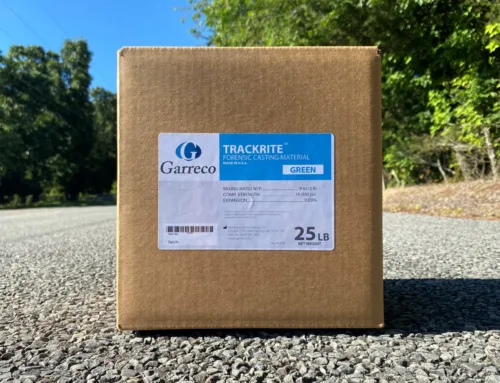Garreco manufactures a wide range of dental gypsums and plasters from a Type II Plaster to a Type V High-Strength Die Stone. Our manufacturing process is ISO 13485 certified and we use only the best raw materials which we carefully formulate for exacting product standards and superior performance. In addition, 100% of our gypsum products are tested prior to being shipped to ensure quality and consistency. Some of our top brands include Apex™, Tecstone™, NaturalRock™, Orthoplaster™, and Pristine®.
Below you will find some general information on our gypsum products including specifications, ISO types, and gypsum mixing techniques to ensure a smooth bubble-free model. We hope you will find this information helpful.
Gypsum Product Information
Garreco gypsum products are broken down into three major categories. Each has a general use within a specific technical procedure.
In addition to these three main categories, Garreco also produces gypsum specially designed for Orthodontic and Operatory cases. Specific products and properties can be found on the Dental Gypsum Product Page.
Water to Powder Ratios
The water to powder ratio for each product is given in cubic centimeters (or millimeters) water to 100 grams of powder.
Initial Set Time
The initial set time listed in minutes is a standard vicat test. Actual working time will be 2-4 minutes less than the initial setting time.
Packaging and Storage
Once a package is opened the material is exposed to moisture and proper storage is required. Dental gypsum products are very hygroscopic, therefore it is important to reseal the plastic bag and store it in a dry space at room temperature when not is use.
It is important that mixing bowls and other mixing equipment for dental gypsum be used only for mixing dental gypsum. Other materials such as phosphate investment or impression materials mixed in the same equipment will seriously contaminate and change the properties of the dental stones. Also be sure to clean all mixing equipment when you are finished and that no dry gypsum remains in the bowl or on your spatula.
ISO Types
ISO Type 1: Dental Plaster, Impression
ISO Type 2: Dental Plaster, Model
ISO Type 3: Dental Stone, Model
ISO Type 4: Dental Stone, Die, High Strength, Low Expansion
ISO Type 5: Dental Stone, Die, High Strength, High Expansion
Gypsum Mixing Techniques
Here are some helpful tips and tricks for mixing your gypsum.
- Use room temperature water.
- Use only water that is drinkable.
- Always place water in bowl first, then add powder to water slowly and evenly.
- HAND MIX using back-and-forth strokes, occasionally turning the bowl and scraping down the sides to incorporate all dry and unmixed material. Do this until a creamy homogeneous mix is achieved. Usually 60 seconds is adequate.
- MECHANICAL MIXING accelerates the working and setting time of Dental Stones and Plasters. Because mechanical mixers are faster, place powder into the water and stir by hand until all powder is wet, then start mechanical mixer. Mix for a shorter time, 10 to 30 seconds, then hand mix to check for a homogeneous mix. DO NOT OVER MIX.
- Mixes can be made thicker or thinner by changing the recommended water plus or minus 1 cc without significantly changing properties.
- Cast models can be removed from impressions when the exotherm is completed. This can generally be determined by touch, i.e. when the heat generated after the initial set has subsided.
- It is important that mixing bowls and other mixing equipment for Dental Gypsum be used ONLY FOR MIXING Dental Gypsum. Other materials such as phosphate Investment or Impression Materials mixed in the same equipment will seriously contaminate and change the properties of the Dental Stones.
Questions?
All Garreco dental gypsum products are batch controlled and tested. Only the finest raw materials are selected and used. This produces a consistent quality necessary for accurate dental restorations. If you have any questions, please contact us at 800-334-1443 or by email support@garreco.com.







[…] For tips on mixing Merlin’s Magic, read Dental Gypsum Mixing Techniques. […]
why does gypsum need to be added to water slowly and evenly ?